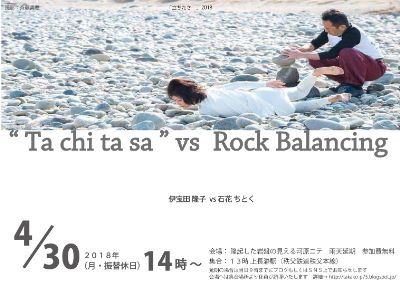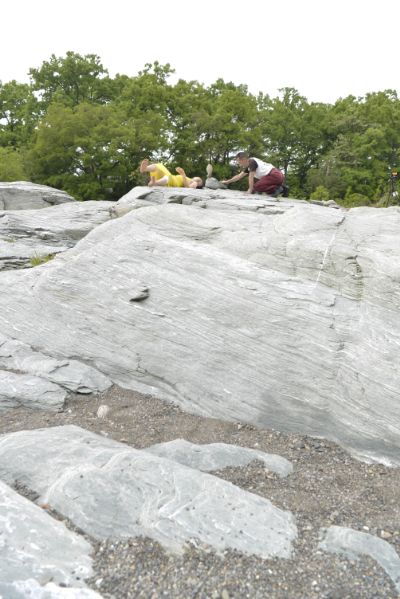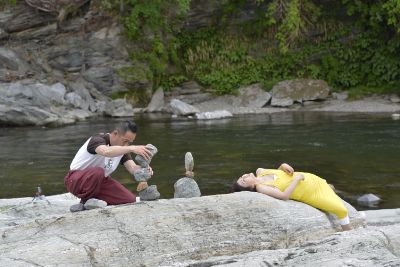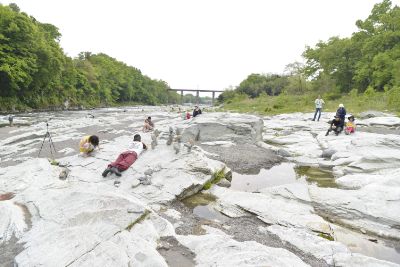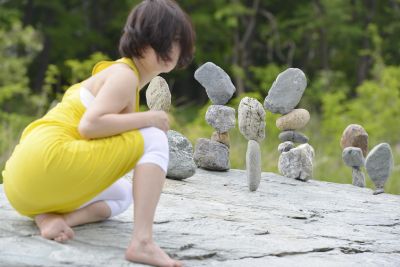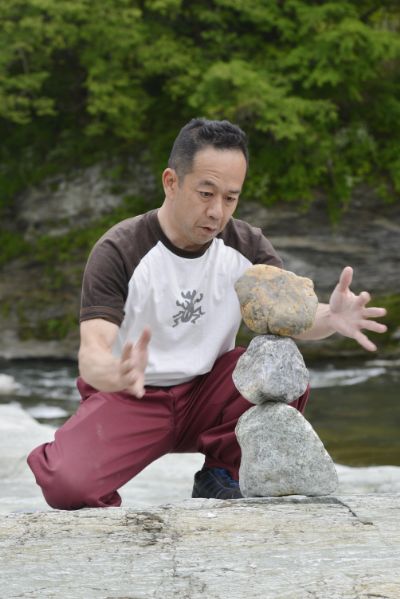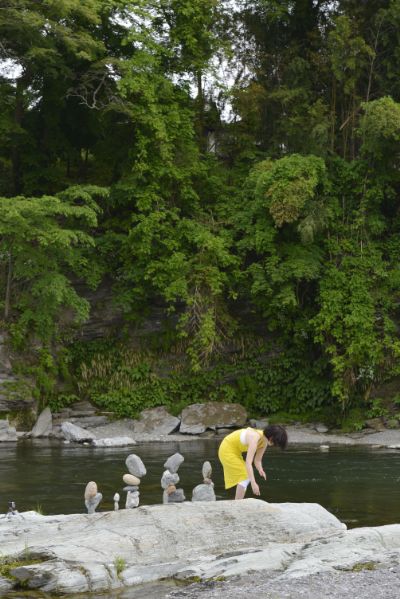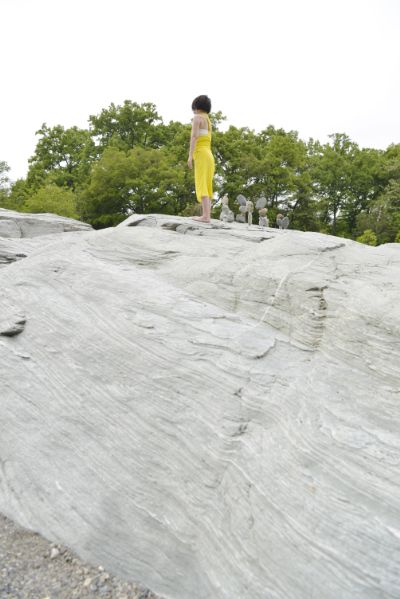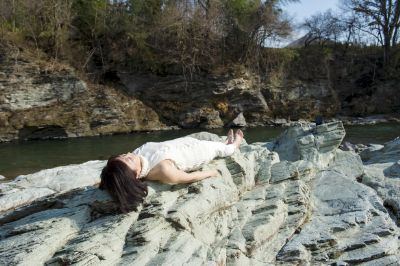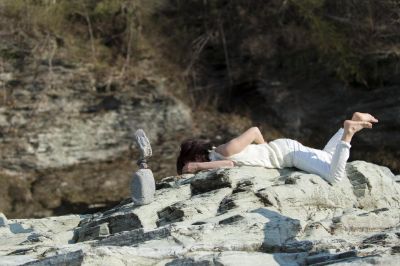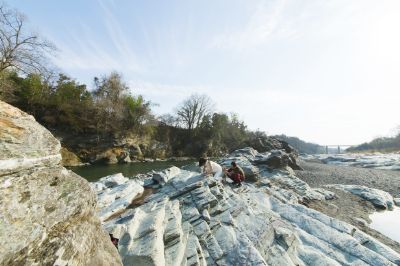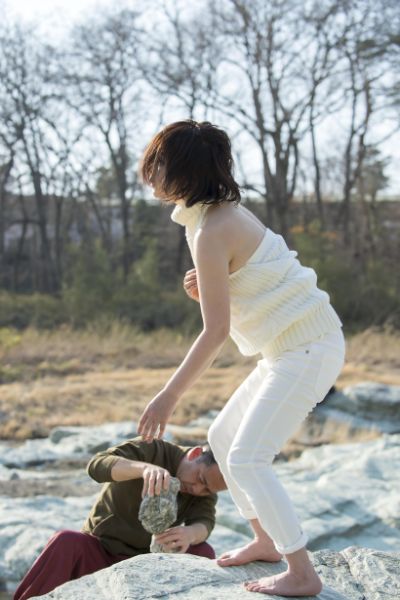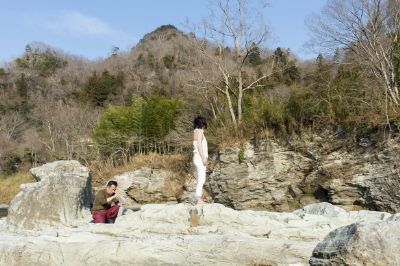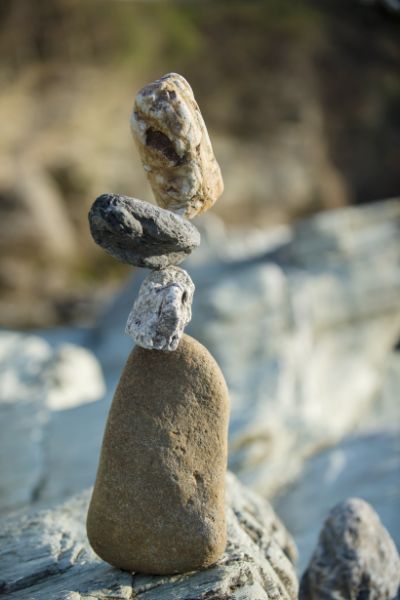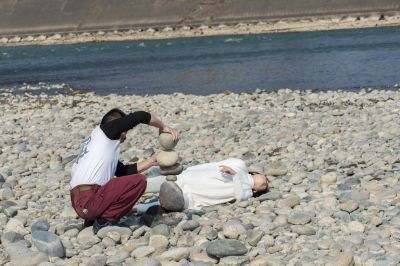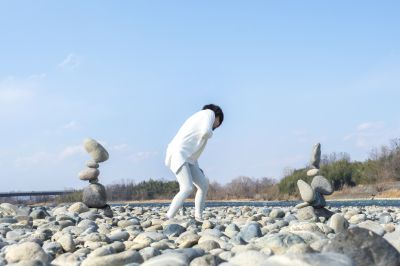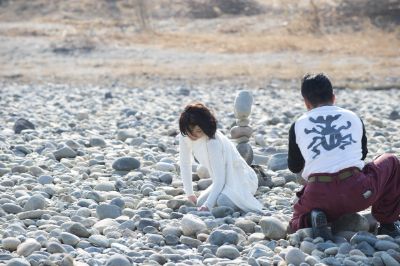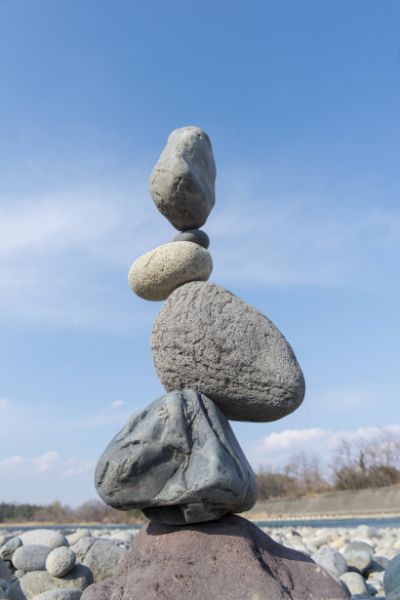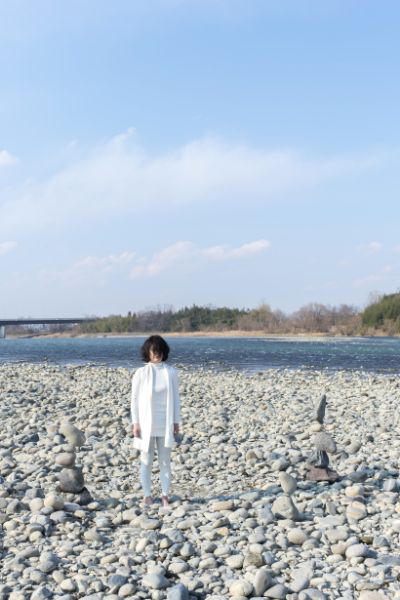“Ta chi ta sa” vs Rock Balancing
Takako Ihoda × Chitoku Ishihana
Open Performance
Date
April 30 2018
Site
At a riverbank where many stones are around.
Kaminagatoro, Saitama Prefecture
Kaminagatoro, Saitama Prefecture
Collaborator
Chitoku Ishihana (Ishihana Master)
Photograph
Eiji Kikuchi
What is Ishi-hana?
Ishi-hana (Stone-flower) is a general term for balance art made of stone, such as rock balancing in Japan.
At the same time that they (rock balancing, stone balancing, etc.) were named "Ishi-hana", the Ishi-hana-kai and Chitoku Ishi-hana were born, and the promotion of Ishi-hana began with the phrase "Don't stack, but stand!".
The act of piling up stones has been executed for a long time around the world, but varied in purpose and form.
In recent years, the name "rock balancing" has become more common among the enthusiasts all over the world.
The name Rock Balancing is popular for now, but it still has a variety of purposes and forms.
The Ishi-hana-kai has an image of "Japanese-style rock balancing," and calls it "Ishi-hana" as the masonry art that makes stones look like flowers by taking advantage of the scenery of the four seasons and the atmosphere of bonsai and flower arrangement.
Comments on collaboration
The reason I started to be interested in contemporary dance is that it feels like "pure art". It is a work that does not use tools (intervened by others or factories) or a feeling that "I am the material". I think that dancers want to express themselves naked directly on the ground in the first place. Even if it is not so pure, it is most comfortable to stand the stone flowers on the bedrock of the earth. In addition, the author himself is projected and reflected on the work. Stone flowers are made only of stones, and hands are involved only in how to place them. Unlike the dancer moves, tries to move anyway, Ishibana quietly tries to stop anyway. That is the exact opposite. And "standing" looks just in the middle. Anyway, it feels like static -> dynamic -> static.
At the same time that they (rock balancing, stone balancing, etc.) were named "Ishi-hana", the Ishi-hana-kai and Chitoku Ishi-hana were born, and the promotion of Ishi-hana began with the phrase "Don't stack, but stand!".
The act of piling up stones has been executed for a long time around the world, but varied in purpose and form.
In recent years, the name "rock balancing" has become more common among the enthusiasts all over the world.
The name Rock Balancing is popular for now, but it still has a variety of purposes and forms.
The Ishi-hana-kai has an image of "Japanese-style rock balancing," and calls it "Ishi-hana" as the masonry art that makes stones look like flowers by taking advantage of the scenery of the four seasons and the atmosphere of bonsai and flower arrangement.
Comments on collaboration
The reason I started to be interested in contemporary dance is that it feels like "pure art". It is a work that does not use tools (intervened by others or factories) or a feeling that "I am the material". I think that dancers want to express themselves naked directly on the ground in the first place. Even if it is not so pure, it is most comfortable to stand the stone flowers on the bedrock of the earth. In addition, the author himself is projected and reflected on the work. Stone flowers are made only of stones, and hands are involved only in how to place them. Unlike the dancer moves, tries to move anyway, Ishibana quietly tries to stop anyway. That is the exact opposite. And "standing" looks just in the middle. Anyway, it feels like static -> dynamic -> static.
Chitoku Ishihana February 2018
Video
Performance
Collaborator
Chitoku Ishihana (Ishihana Master)
Photograph
Miharu Saitoh
Date
March 15 2018
Site
Riverbank at Nagatoro, Saitama Prefecture
Date
February 23 2018
Site
Riverbank at Tonegawa, Gunma Prefecture
